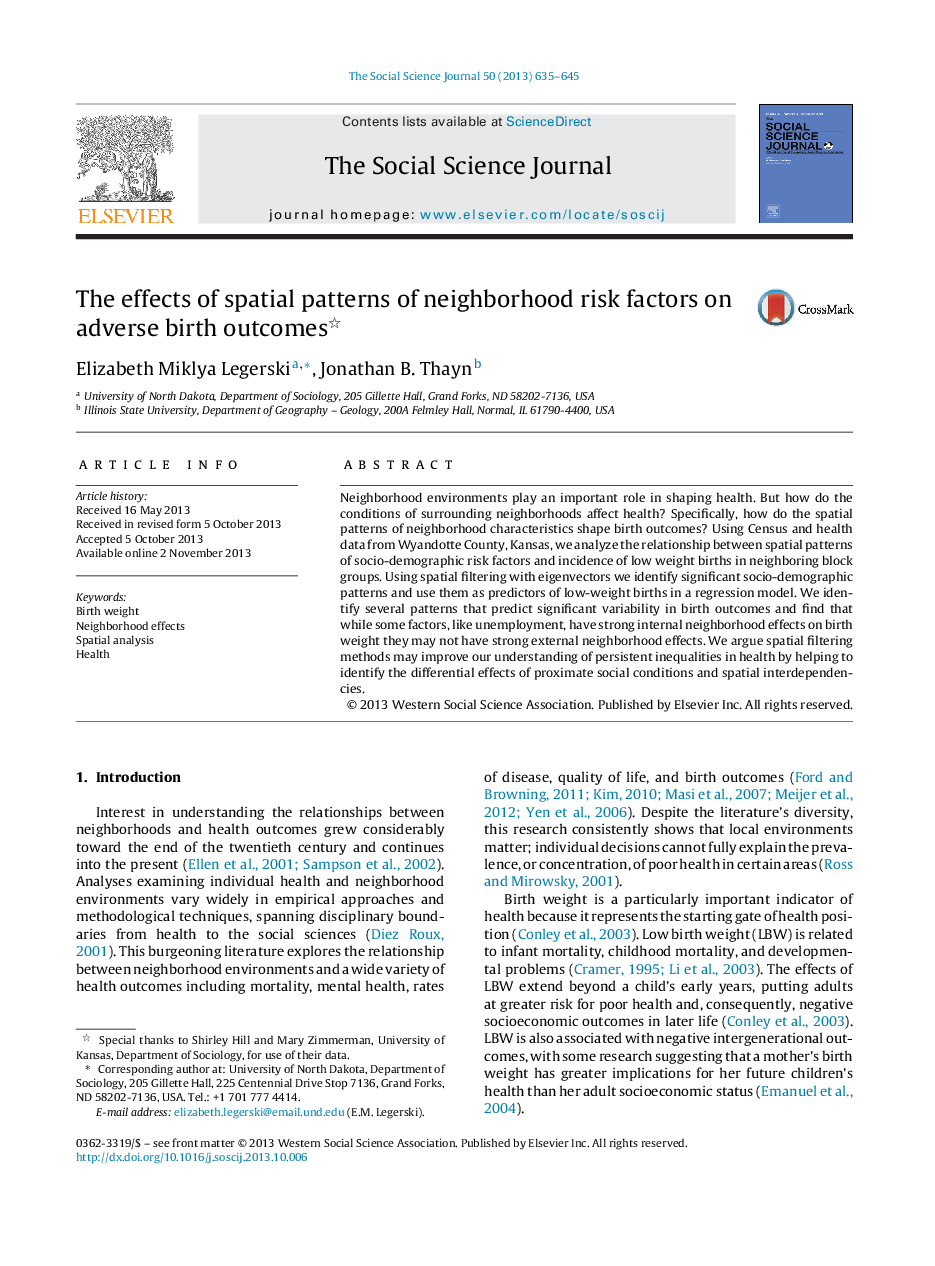| Article ID | Journal | Published Year | Pages | File Type |
|---|---|---|---|---|
| 140163 | The Social Science Journal | 2013 | 11 Pages |
•We use spatial filtering with eigenvectors to identify socio-demographic risk patterns.•Neighborhood risk patterns are used to predict low-weight births in Census block groups.•Several patterns predict significant variability in birth outcomes.•Unemployment patterns have strong internal neighborhood effects on birth weight.•Racial patterns may have external neighborhood effects on birth weight.
Neighborhood environments play an important role in shaping health. But how do the conditions of surrounding neighborhoods affect health? Specifically, how do the spatial patterns of neighborhood characteristics shape birth outcomes? Using Census and health data from Wyandotte County, Kansas, we analyze the relationship between spatial patterns of socio-demographic risk factors and incidence of low weight births in neighboring block groups. Using spatial filtering with eigenvectors we identify significant socio-demographic patterns and use them as predictors of low-weight births in a regression model. We identify several patterns that predict significant variability in birth outcomes and find that while some factors, like unemployment, have strong internal neighborhood effects on birth weight they may not have strong external neighborhood effects. We argue spatial filtering methods may improve our understanding of persistent inequalities in health by helping to identify the differential effects of proximate social conditions and spatial interdependencies.
